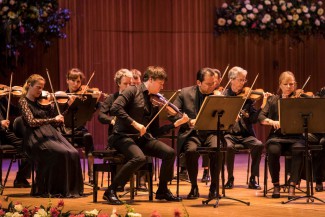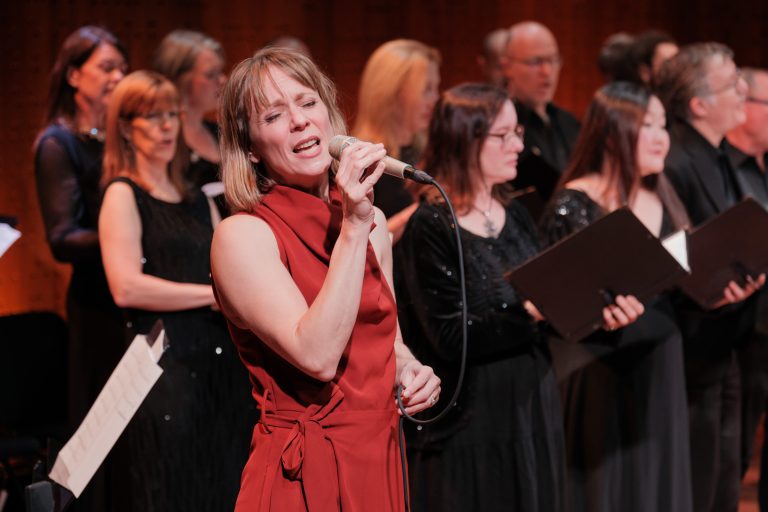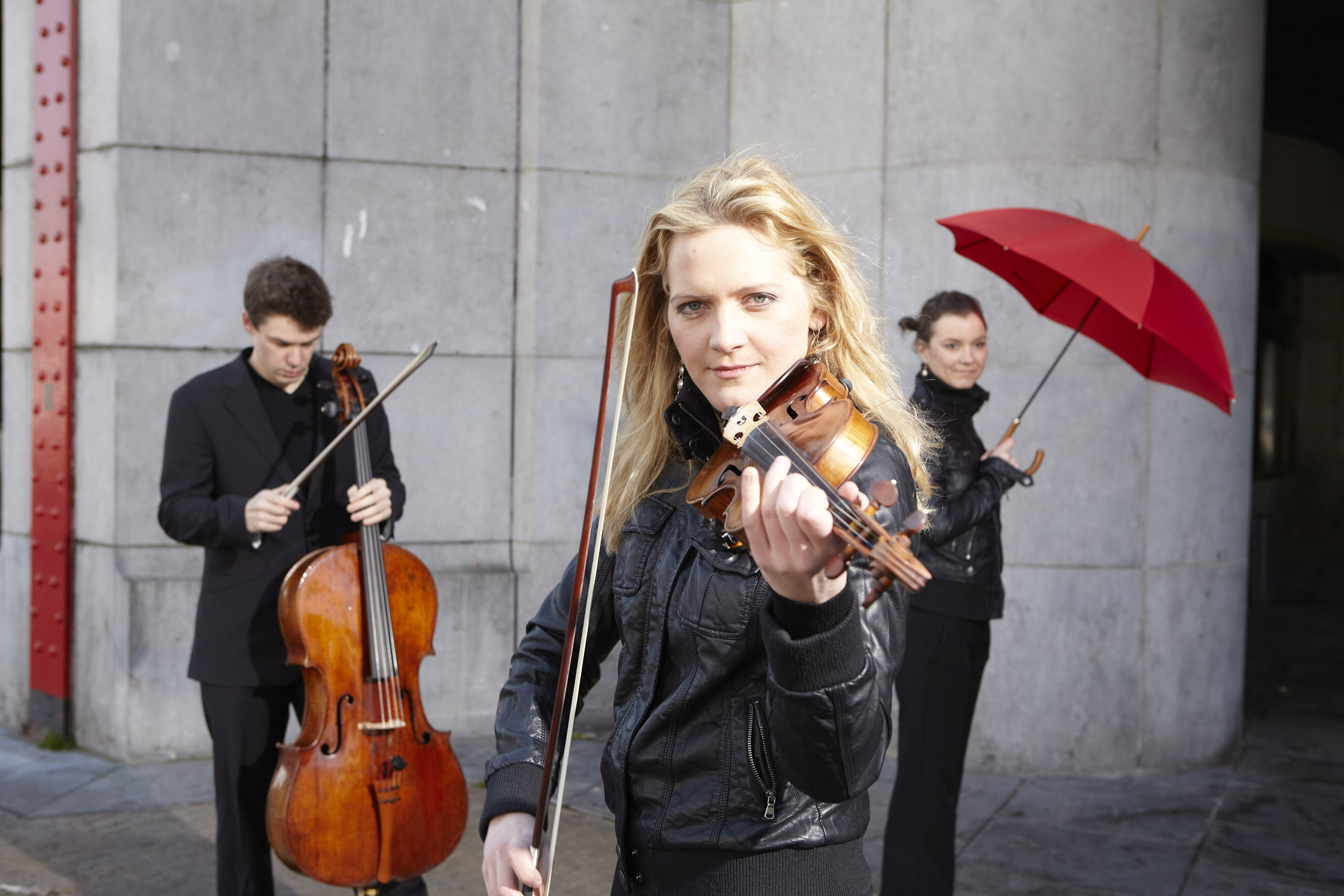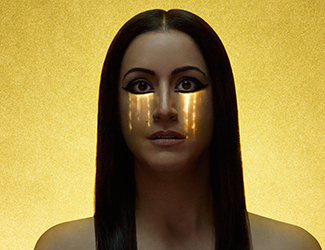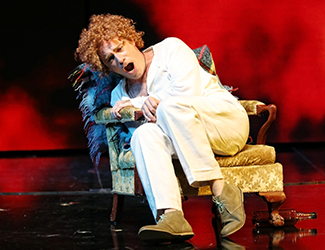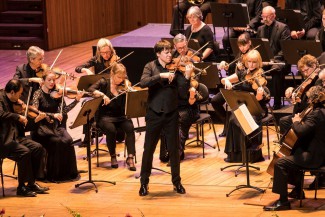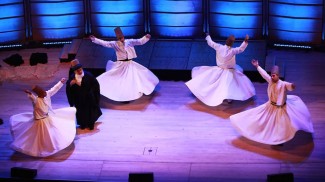Concert Review: Academy of St Martin In The Fields Led By Joshua Bell/ Concert 1
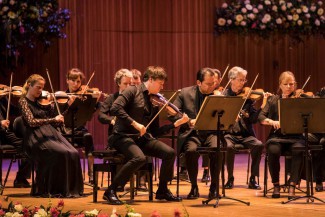
The Academy of St Martin in the Fields led by Joshua Bell
Concert Hall, Sydney Opera House
April 22, 2017
A demonstration of genius was anticipated and well received when American violinist Joshua Bell playing his 1713 Huberman Stradivarius violin with an 18th century François Tourte French bow, led the Academy of St Martin in the Fields, in their first of two Sydney concerts. It was a crowd-pleasing programme of music by Mendelssohn, Tchaikovsky and Schumann.
The packed ‘house’ was a veritable ‘field’ of pink and white roses, gerberas and chrysanthemums, lending a sense of occasion to the concert in which Bell, who has been Music Director of the ensemble since 2011, performed the dual role of ensemble leader and soloist.
There are numerous threads linking the selections on this programme. The works by Mendelssohn – The Hebrides Overture, opus 26 (Fingal’s Cave) and the Symphony No 4 in A major, opus 90, (Italian) – were inspired by travel; Tchaikovsky wrote his only violin concerto whilst in Geneva; this and Schumann’s only violin concerto were written in the Key of D (major and minor, respectively).
His extraordinary gifts discovered as a child, Bell today is at the pinnacle of his field; the orchestra, founded in 1958 by the late Sir Neville Marriner has unparalleled achievements and a flawless reputation across a broad spectrum of activities. Their performance in Sydney was deeply gratifying and awe-inspiring. It was, as well, an interesting exercise in observing Bell in the dual role of leader and soloist. Anyone who has entertained the question of whether an elite ensemble even needs a conductor, need only observe Bell to develop their views. It is also a worthy consideration of the how a chamber sized ensemble plays symphonic repertoire.
Perched on a piano stool, Bell led the 38-strong ensemble in spirited renditions of the two works by Mendelssohn which book-ended the programme. No conductor was needed to beat time with one hand whilst shaping sounds with the other. The musicians of the ensemble were instinctive and well-disciplined in their sense of ensemble and delivery of the music. Themes and counter-themes were brought to the fore in turn; dynamics, phrasing and articulation were impeccable. The overall effect was perhaps not as lavish as full-sized symphonic ensemble, but there is a clarity to hearing these works performed by smaller forces. The orchestra’s verve and Bell’s drive did the music every justice, fulfilling its mission “retaining the collegiate spirit and flexibility of the original small, conductor-less ensemble……performing symphonic repertoire and ‘chamber music on a grand scale’.”
Tchaikovsky composed his violin concerto in 1878 after a traumatic 1877, writing to a friend that he coaxed from himself ‘weak and rotten little themelets.’ He wrote it for the violinist Iosif Kotek, a former student with whom he was friends. Kotek played through the concerto as Tchaikovsky sketched it in just 11 days, completing it 2 weeks later. The collaboration yielded a virtuoso piece crammed with lyricism along with relentless double stops, dizzying harmonics, arpeggios and other technical gauntlets. The concerto was declared unplayable by Leopold Auer, the Hungarian virtuoso to whom Tchaikovsky dedicated it, leaving it to be premiered in Vienna by Adolf Brodsky and conductor Hans Richter on December 4, 1881.
Bell’s high-octane performance was not only technically thrilling, it conveyed the anguish that Tchaikovsky must have felt as he composed. Bell accomplished his exacting role as soloist as well as cueing the orchestra, led by Principal First Violin Harvey de Souza and worthy section principals. The first movement with its brilliant cadenza placed at the end of the development, elicited thunderous applause and a standing ovation by some before the audience settled to a heartfelt Canzonetta, soloist and ensemble navigating tempo changes in perfect agreement and segueing into bravura Finale driven by robust Slavonic rhythms.
The slow, middle movement of Schumann’s Violin Concerto was performed (by Yehudi Menuhin) in isolation at a 1958 tribute concert to the British horn player Dennis Brain who was killed in a car accident in 1957. His good friend Benjamin Britten composed a 7-bar codetta for strings to end the movement as it otherwise moves directly to the third movement, a Polonaise. Bell’s introspective and delicate rendition, contained a moving dialogue between Bell and the cello, played with ringing beauty by Principal Cello Stephen Orton.
As an encore, there was more Tchaikovsky as Bell led the string section in a charming rendition of the Waltz from the Serenade for Strings.
Joshua Bell and the Academy of St Martin in the Fields perform again in the Concert Hall of the Sydney Opera House tonight at 7 pm, playing Mozart’s Symphony No 25, which the ensemble famously recorded for the film Amadeus, Mozart’s Violin Concerto No 4 and Beethoven’s Symphony No 3, ‘Eroica’.
Beg, borrow or steal a ticket.
Shamistha de Soysa for SoundsLikeSydney©
Read the review of the second Sydney concert from Sunday April 23.
Check out the image gallery from last night’s concert.

